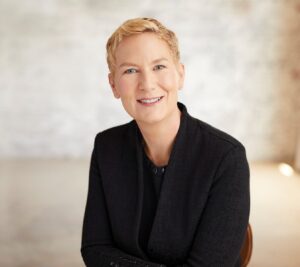For nearly 150 years, managing general agencies have been an important sales and distribution arm of the U.S. insurance industry, initially offering a way for an early insurance company to enter emerging Western states without having to invest in developing a local office. As the carrier’s fronting mechanism, the MGAs were authorized to underwrite, issue and sign insurance contracts on its behalf in these regions.
Executive Summary
New managing general agencies are leveraging technology to disrupt the status quo in commercial lines for small and midsize businesses and specialty lines for consumers with some entirely new entrants, like Joyn, and others linked to well-known brand names, like Berkshire-Hathaway and Chubb. Veteran Insurance Journalist Russ Banham got the scoop on building efforts for all of them from the executives leading the innovation efforts.MGAs continue to “hold the pen” for property/casualty insurers in providing a cost-effective way for insurers to generate new business. Until recently, however, the wholesale brokers were as stodgy as the rest of the legacy industry. No longer is this the case, following the explosion in InsurTech MGAs using technology to quote, underwrite, bill and price property, casualty and health insurance policies in real-time—a compelling value proposition for prospective customers.
Emphasizing that today’s MGAs are a new breed, the companies have selected brand names as trendy as other InsurTechs’ monikers. Among them are Joyn and biBERK, two that perceive a ripe opportunity to engage businesses with digital insurance policies, which are as easy to understand as they are to buy. Here are their stories, followed by a couple others.
Connecting Joy to the Insurance Experience
Seraina Macia moved to the United States from her native Switzerland in 2008 to join Zurich Financial Services as the president of its specialty insurance business unit. Between then and now, Macia served in a leadership capacity at several insurers—chief executive of XL Insurance, CEO of regional operations at AIG and CEO at Hamilton Insurance, which was acquired by AIG and renamed Blackboard Insurance in 2017.
Macia left Blackboard in 2020 and is presently the co-founder and CEO of Joyn, an MGA backed by top 20 global insurer and reinsurer SiriusPoint, created earlier this year via the merger of Sirius International Insurance Group and Third Point Reinsurance. Joyn, whose novel name is not unusual in an era of oddly titled InsurTechs like Hippo and Lemonade, is a play on two words: joy and join. “We want to bring joy into the insurance context,” Macia explained. “We’re doing that by joining with SiriusPoint as close partners in a family that also includes brokers and the business leaders we serve.”
The joy that Joyn hopes to deliver is predicated on the combined use of digital technology, automation and data analytics to remove the operational inefficiencies inherent in transacting insurance in the lower-midmarket commercial insurance space, basically businesses with $10 million to $30 million in annual revenues. “We believe this market is ripe for transformation and has the desire to undertake this transformation,” Macia said.
Many owners and managers of midsize businesses would likely agree that buying commercial insurance policies is a time-consuming manual process fraught with uncertainty and frustration. The policy language can be arcane, wordy and open to interpretation. Whereas other InsurTech MGAs have successfully solved these drawbacks for smaller Main Street-type businesses, the lower-midmarket has yet to achieve the same benefits, Macia said.
“The small business end of the commercial market is crowded with InsurTech providers, but this is not the case with midsize companies. The few InsurTechs we studied are focused on solving narrow problems in the value chain,” she said. “We saw an opportunity to provide a level of automation that would be transformative, leveraging modern technologies to create a new standard of expectation for a $100 billion market we felt was underserved.” (Market size estimate from S&P Global Market Intelligence)

“The small business end of the commercial market is crowded with InsurTech providers, but this is not the case with midsize companies. The few InsurTechs we studied are focused on solving narrow problems in the value chain.”
Seraina Macia, Joyn
 “To our surprise, we found that too few questions were a concern, as it suggested we weren’t putting effort into trying to understand the owner’s business.”
“To our surprise, we found that too few questions were a concern, as it suggested we weren’t putting effort into trying to understand the owner’s business.”
Peter Shelley, Berkshire Hathaway Direct Insurance Company
 “Small businesses historically have had to buy these independent policies that were difficult to read and understand. They put you to sleep.”
“Small businesses historically have had to buy these independent policies that were difficult to read and understand. They put you to sleep.”
Rakesh Gupta, biBERK
 “With our cyber product, there are no underwriting questions. Right away, you pick the type of insurance policy you want, in terms of coverages and price…Nobody wants to read through 20 or 30 pages with endless endorsements they can’t comprehend.”
“With our cyber product, there are no underwriting questions. Right away, you pick the type of insurance policy you want, in terms of coverages and price…Nobody wants to read through 20 or 30 pages with endless endorsements they can’t comprehend.”
Laura Bennett, Chubb
Joyn launched in July on a nonadmitted basis in 21 states with a property insurance product for six industry verticals. The MGA has received a few submissions already, Macia said in mid-July. In September, Joyn will begin offering general liability insurance in these states and hopes to have a presence in as many as 30 states by the end of the year as well as an umbrella liability product. “Next year we’ll add the remainder of the states and move into the admitted space nationwide,” she said.
The MGA is focused on transferring commercial risks for midsize companies in six industry segments: real estate, manufacturing, services, wholesale, retail and contractors. Macia said these businesses have no time to waste on a manual insurance process that is strewn with bottlenecks and steals their attention from the more important aspects of running the organization. These “pain points” begin with the insurance submission process to determine the premium quote, she said.
“Half the time after they manually fill out the submission, they don’t get a response back for days, weeks and longer, if at all,” Macia alleged. “We’ve created an automated intake process that pulls in all the data the company normally provides on a manual basis in the submission, easing the process. This helps us respond to every submission within 48 hours with a fast ‘yes’ or ‘no’ from an underwriting perspective.”
Assuming the response is affirmative, the policy is automatically bound and issued. “Typically, brokers serving the lower-midmarket hire a third party to check a policy for clerical errors, which consumes time and frequently results in the need to rewrite the policy,” she said. “Since our policies are automated and machine-generated, they are accurate from the outset.”
Joyn also ensures consistency in the underwriting responses, she said, explaining that a broker typically provides the submission to a group of carriers for a quote and receives back a range of coverage terms and conditions at different premium rates that make little sense to the buyer.
“We’ve created what we call machine-augmented underwriting, which is not an easy thing to do by the way,” she said. “Basically, we’ve automated most of the underwriting rules, so the broker always receives a consistent response. By automatically pulling most of the [customer’s] data from external sources, underwriters are freed up to focus on the red flags, where human judgment is needed.”
Asked for an example of a red flag, she cited a commercial building that is older than 30 years. If the data on the condition of the roof is not available to automatically pull into the submission, an underwriter needs to reach out to a local inspector to evaluate the roof, she said.
Since Joyn automates the policy rating process, a request to change the policy—choosing a different deductible, for example—can be completed in real time, Macia said, pointing out that this process generally consumes two to three days at present. “These things will eventually become standard, but we’re making them standard now,” she said. “Our goal is to do what the industry has long done, just 10 times better.”
While InsurTech competitors also can pull external data sources to fill in the typical questions in an insurance submission, Joyn’s competitive differentiation, Macia said, is the real-time integration of this data into its underwriting process on a consistent basis. “We draw data from 10 external sources and are adding to this all the time, but the difference is how we use this data consistently,” she said. “Eventually, we’ll apply machine learning to continuously refine the underwriting rules, making the process smarter and faster.”
In creating this differentiating experience, she extolled the work of Joyn’s data and insurance teams. “They’re not afraid to challenge the status quo,” she said. “I told them we had an opportunity to start a company from scratch that can create a new industry standard of excellence. It’s a high bar, but one they are all eager to grasp.”
In five years, Macia forecast that Joyn will be a significant player in the middle-market space. “Our strategic partnership and investments from SiriusPoint suggest they are very open to us growing through acquisitions, given the potential to make a difference in a $100 billion market,” Macia said.
She emailed a news release in which Sid Sankaran, SiriusPoint CEO and chairman, appeared to support this evolution. “Joyn’s tech-enabled approach, underwriting-first mindset, and the team’s obsession with resolving longstanding pain points for brokers and customers align perfectly with our vision for how to bring about change in the marketplace,” Sankaran stated.
THREE for the Road
biBERK also provides commercial insurance, in its case to traditional Main Street businesses, selling workers compensation, BOPs (businessowner insurance policies), general liability, umbrella, professional liability and (as of May 2021) commercial automobile insurance. Unlike Joyn, (but similar to Blink, described below), it’s not an independent MGA. biBERK is a business unit fully owned and operated by Berkshire Hathaway, which retains 100 percent of the insured risk.
In its advertisements, the nearly five-year-old company touts its national footprint, broad array of small business-focused insurance coverages, rapid quoting, premium savings—attributed to no middleman or insurance broker—and the estimable financial strength and stability of Berkshire Hathaway. Recently, biBERK has capitalized on these assets in offering THREE, a single insurance policy combining BiBERK’s different small business insurance coverages.
“biBERK is an à la carte menu of small business insurance products, whereas THREE is a buffet,” said Peter Shelley, president of Berkshire Hathaway Direct Insurance Company. “On a laptop or a cellphone, a small business can buy one insurance policy composed of three different policies: workers compensation, commercial auto and a BOP. Within five minutes, the customer gets a price quote, and in another five minutes gets the coverage. That’s a unique value proposition.”
Another plugged value is the cost of the policy, which is approximately 20 percent less than buying three policies on a separate basis, said Rakesh Gupta, biBERK’s chief operating officer. These savings derive in part from the MGA’s automated quote and binding processes, which are passed on to small business customers in lower premiums.
“With both biBERK and THREE, we initially thought we needed to make the [submission] questionnaire as short as possible to make it easy and fast for small business owners to fill out,” said Shelley. “To our surprise, we found that too few questions were a concern, as it suggested we weren’t putting effort into trying to understand the owner’s business. Every company is unique, of course, and they actually wanted us to ask them about their business to ensure we were giving them coverages they needed and were pricing them correctly.”
The longer questionnaire still takes most business owners no more than five minutes to fill out, even with bundling together three separate insurance policies into one. “Small businesses historically have had to buy these independent policies that were difficult to read and understand. They put you to sleep,” Gupta said. Business owners also were unsure what was covered in each policy. “In some cases, there were overlapping coverages [across the three policies] and coverage gaps. We’ve found the right balance between too few questions and too many,” he added.
THREE is three pages long and written in “simple English,” Gupta said, noting that additional insurance products like flood, cyber, earthquake and even more complicated coverages like directors and officers liability (D&O insurance) may be added to the policy.
In the Blink of an Eye
Blink by Chubb also is predicated on providing simple, straightforward and streamlined insurance information and policies to buyers, although its target market is consumers, and to be more precise, millennials. “We researched what opportunities were out there to provide additional insurance services and realized we were not meeting the needs of millennials,” said Laura Bennett, Chubb senior vice president of eConsumer in North America.
These insights were discerned following an early 2020 survey of more than 1,000 millennials. When asked if they felt they were getting great value from their insurance policies, only 3 percent of the respondents responded affirmatively. “For the most part, they didn’t understand what they were buying and had an overall poor impression of insurance,” Bennett said. “While they recognized the need for insurance, they didn’t engage with their agents in the ways that other generations did.”
Blink by Chubb was developed to overcome these drawbacks. Written in plain language, its first digital-only insurance policy covers personal cyber risks. The policy absorbs nine separate cyber exposures, including extortion, financial fraud, data breaches of privacy, identity theft and cyber bullying, among others.
“With our cyber product, there are no underwriting questions. Right away, you pick the type of insurance policy you want, in terms of coverages and price,” Bennett said. “Nobody wants to read through 20 or 30 pages with endless [coverage] endorsements they can’t comprehend.”
Although Blink is a wholly-owned, Chubb-endorsed brand and is not licensed as an MGA, it has engaged with a group of InsurTech MGAs that appeal to a millennial audience. For example, Waffle, an easy-to-use platform focused on the insurance needs of millennials, offers the Blink cyber product through its website and app. Waffle also partners with other insurers like Crum & Forster to provide pet insurance and with Arch RoamRight to provide travel insurance, among other carriers.
Another Blink partner is iBynd, an InsurTech MGA that also has a millennial-focused platform and is in the process of integrating Blink’s personal cyber insurance policy into its suite of products. Bolt Access, an InsurTech MGA that offers both digital personal lines and commercial lines products, has a similar partnership arrangement with Blink. “We have APIs [application programming interfaces] that connect with each of these partners to offer easy, effortless and affordable consumer insurance products,” Bennett said.
Blink will gradually add other policies to its lineup for millennials, including travel, pet, personal valuables and disability insurance. Filing a claim against any Blink policy also is a streamlined and simple digital experience, Bennett said.
Obviously, an industry often criticized for being slow to address today’s instant gratification culture has caught up to the need and is giving business owners and consumers more of an Amazon-like experience. Joyn’s Macia equated the legacy insurance industry and today’s InsurTech MGA startups to the difference between “renovating an old house and building a super-nice, modern smarthome, much faster, cheaper and better.”
Shelley from Berkshire has a similar perspective. “The insurance industry has never been accused of being at the ‘bleeding edge,'” he said with a laugh. “But the truth is that Amazon, Uber and other tech companies have raised the bar when it comes to customer empowerment. We simply have to make steady improvements in the customer experience.”
Nothing stodgy about that.





















 Berkshire Hathaway Announces Leadership Appointments: New CEO at GEICO
Berkshire Hathaway Announces Leadership Appointments: New CEO at GEICO  Examining 5 Key Factors Fueling MGA Growth—and Emerging Challenges Ahead
Examining 5 Key Factors Fueling MGA Growth—and Emerging Challenges Ahead  What to Expect in 2026: U.S. P/C Results More Like 2024
What to Expect in 2026: U.S. P/C Results More Like 2024  Chubb, The Hartford, Liberty and Travelers Team Up on Surety Tech Co. Launch
Chubb, The Hartford, Liberty and Travelers Team Up on Surety Tech Co. Launch 









